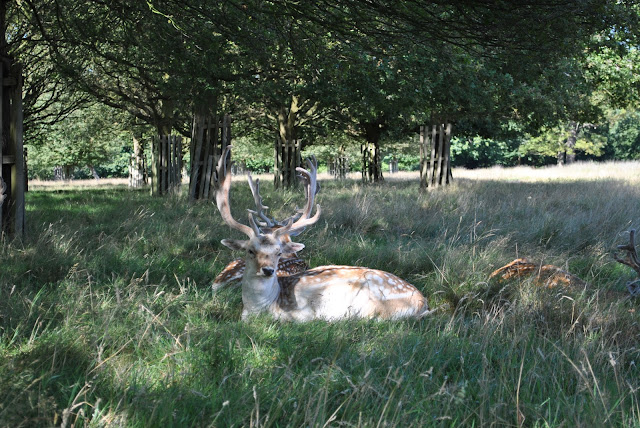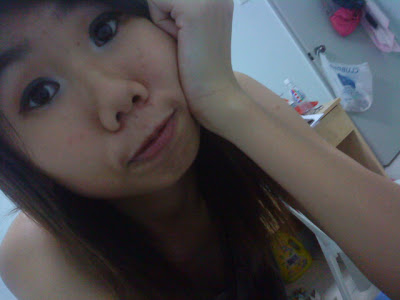Introduction
The
Nikon D3000 is a new entry-level
digital SLR camera designed to make photography simple and accessible. Aimed at the complete beginner, the D3000 is primarily aimed at anyone who wants to take photos without having to worry about what the camera is doing. The intelligent Guide Mode asks you about the image you want to capture and automatically optimizes the settings for the best possible results. When you’ve gained more experience, you can then use the Guide Mode to find out how to adjust the settings yourself. The
Nikon D3000 also features a 10.2 megapixel sensor, EXPEED processing system, 3-inch LCD screen, 3 fps continuous shooting and 11-point autofocus system.
Specifications
Type
Single-lens reflex digital camera
Lens mount
Nikon F mount (with AF contacts)
Effective picture angle
Approx. 1.5 x lens focal length (
Nikon DX format)
Effective pixels
10.2 million
Image sensor
23.6 x 15.8 mm CCD sensor
Total pixels
10.75 million
Dust-reduction system
Image Sensor Cleaning, Airflow Control System, Image Dust Off reference data (optional Capture NX 2 software required)
Image size (pixels)
3,872 x 2,592 [L], 2,896 x 1,944 [M], 1,936 x 1,296 [S]
File format
• NEF (RAW)
• JPEG: JPEG-Baseline compliant with fine (approx. 1:4), normal (approx. 1:8), or basic (approx. 1:16) compression
• NEF (RAW) + JPEG: Single photograph recorded in both NEF (RAW) and JPEG formats
Picture Control System
Can be selected from Standard, Neutral, Vivid, Monochrome, Portrait, Landscape; selected Picture Control can be modified
Media
SD (Secure Digital) memory cards, SDHC compliant
File system
DCF (Design Rule for Camera File System) 2.0, DPOF (Digital Print Order Format), Exif 2.21 (Exchangeable Image File Format for Digital Still Cameras), PictBridge
Viewfinder
Eye-level pentamirror single-lens reflex viewfinder
Frame coverage
Approx. 95% horizontal and 95% vertical
Magnification
Approx. 0.8 x (50 mm f/1.4 lens at infinity, -1.0 m-1)
Eyepoint
18 mm (-1.0 m-1)
Diopter adjustment
-1.7 to +0.5 m-1
Focusing screen
Type B BriteView Clear Matte Mark V screen with focus frame (framing grid can be displayed)
Reflex mirror
Quick return type
Lens aperture
Instant return, electronically controlled
Compatible lenses
• AF-S and AF-I NIKKOR: All functions supported
• Type G or D AF NIKKOR without built-in autofocus motor: All functions except autofocus supported. IX NIKKOR lenses not supported.
• Other AF NIKKOR: All functions supported except autofocus and 3D color matrix metering II. Lenses for F3AF not supported.
• Type D PC NIKKOR: All functions supported except some shooting modes.
• AI-P NIKKOR: All functions supported except 3D color matrix metering II.
• Non-CPU: Autofocus not supported. Can be used in exposure mode M, but exposure meter does not function.
Note: Electronic rangefinder can be used if lens has a maximum aperture of f/5.6 or faster.
Type
Electronically-controlled vertical-travel focal-plane shutter
Speed
1/4000 to 30 s in steps of 1/3 EV, Bulb, Time (requires optional Wireless Remote Control ML-L3)
Flash sync speed
X=1/200 s; synchronizes with shutter at 1/200 s or slower
Release mode
Single-frame, continuous, self-timer, quick-response remote, delayed remote
Frame advance rate
Up to 3 fps (manual focus, mode M or S, shutter speed 1/250 s or faster, and other settings at default values)
Self-timer
Can be selected from 2, 5, 10, and 20 s duration
Metering
TTL exposure metering using 420-pixel RGB sensor
Metering method
• Matrix: 3D color matrix metering II (type G and D lenses); color matrix metering II (other CPU lenses)
• Center-weighted: Weight of 75% given to 8-mm circle in center of frame
• Spot: Meters 3.5-mm circle (about 2.5% of frame) centered on selected focus point
Range (ISO 100, f/1.4 lens, 20oC/68oF)
• Matrix or center-weighted metering: 0 to 20 EV
• Spot metering: 2 to 20 EV
Exposure meter coupling
CPU
Exposure Modes
Auto modes (auto, auto [flash off ]), Scene Modes (Portrait, Landscape, Child, Sports, Close up, Night portrait), programmed auto with flexible program (P), shutter-priority auto (S), aperture-priority auto (A) manual (M)
Exposure compensation
-5 to +5 EV in increments of 1/3 EV
Exposure lock
Luminosity locked at detected value with AE-L/AF-L button
ISO sensitivity (Recommended Exposure Index)
ISO 100 to 1600 in steps of 1 EV. Can also be set to approx. 1 EV above ISO 1600 (ISO 3200 equivalent), auto ISO sensitivity control available
Active D-Lighting
Can be selected from On or Off
Autofocus
Nikon Multi-CAM 1000 autofocus sensor module with TTL phase detection, 11 focus points (including one cross-type sensor), and AF-assist illuminator (range approx. 0.5 to 3m / 1 ft. 8 in. to 9 ft. 10 in.)
Detection range
-1 to +19 EV (ISO 100, 20oC/68oF)
Lens servo
• Autofocus (AF): Single-servo AF (AF-S); continuous-servo AF (AF-C); auto AF-S/AF-C selection (AF-A); predictive focus tracking activated automatically according to subject status
• Manual focus (MF): Electronic rangefinder can be used
Focus point
Can be selected from 11 focus points
AF-area mode
Single-point AF, dynamic-area AF, auto-area AF, 3D-tracking (11 points) AF
Focus lock
Focus can be locked by pressing shutter-release button halfway (Single-servo AF) or by pressing AE-L/AF-L button
Built-in flash
Approx. 12/39, 13/43 with manual flash (m/ft, ISO 100, 20oC/68oF)
Guide Number
-1 to +19 EV (ISO 100, 20oC/68oF)
Flash control
• TTL: i-TTL balanced fill-flash and standard i-TTL flash for digital SLR using 420-pixel RGB sensor are available with built-in flash and SB-900, SB-800, SB-600, or SB-400 (i-TTL balanced fill-flash is available when matrix or center-weighted metering is selected)
• Auto aperture: Available with SB-900, SB-800 and CPU lens
• Non-TTL auto: Supported flash units include SB-900, SB-800, SB-80DX, SB-28DX, SB-28, SB-27, and SB-22S
• Range-priority manual: Available with SB-900 and SB-800
Flash mode
Auto, auto with red-eye reduction, fill-flash, auto slow sync, auto slow sync with red-eye correction, and rear curtain with slow sync
Flash compensation
-3 to +1 EV in increments of 1/3 EV
Flash-ready indicator
Lights when built-in flash or optional flash unit such as SB-900, SB-800, SB-600, SB-400, SB-80DX, SB-28DX, or SB-50DX is fully charged; blinks for 3 s after flash is fired at full output
Accessory shoe
ISO 518 hot-shoe with sync and data contacts and safety lock
Nikon Creative Lighting System (CLS)
Advanced Wireless Lighting supported with SB-900, SB-800, or SU-800 as commander; Flash Color Information Communication supported with built-in flash and all CLS-compatible flash units
Sync terminal
Sync Terminal Adapter AS-15 (optional)
White balance
Auto, incandescent, fluorescent (7 types), direct sunlight, flash, cloudy, shade, preset manual, all except preset manual with fine turning.
LCD monitor
3-in., approx. 230 k-dot TFT LCD with brightness adjustment
Playback function
Full-frame and thumbnail (4, 9, or 72 images or calendar) playback with playback zoom, playback of stop-motion movies created with
D3000, slide show, histogram display, highlights, auto image rotation, and image comment (up to 36 characters)
USB
Hi-Speed USB
Audio video output
Can be selected from NTSC and PAL
Supported languages
Chinese (Simplified and Traditional), Danish, Dutch, English, Finnish, French, German, Italian, Japanese, Korean, Norwegian, Polish, Portuguese, Russian, Spanish, Swedish
Battery
One Rechargeable Li-ion Battery
EN-EL9aAC adapter
AC Adapter EH-5a; requires Power Connector EP-5 (optional)
Tripod socket
1/4 in. (ISO 1222)
Dimensions (W x H x D)
Approx. 126 x 97 x 64 mm (5.0 x 3.8 x 2.5 in.)
Weight
Approx. 485 g (1 lb. 1.1 oz.) without battery, memory card, or body cap
Temperature
0 to 40oC (32 to 104oF)
Humidity
Less than 85% (no condensation)
Supplied accessories (may differ by country or area)
Rechargeable Li-ion Battery
EN-EL9a , Quick Charger MH-23,, Eyepiece Cap DK-5, Rubber Eyecap DK-20, USB Cable UC-E4, Video Cable EG-D100, Camera Strap AN-DC3, Accessory Shoe Cover BS-1, Body Cap BF-1A, Software Suite CD-ROM
Sample image

Conclusion
As with the
Nikon range topping D3x, with the
D3000 at the very opposite end of the scale, its manufacturer is again providing the photographer (fledgling in this case) with their own virtual 'wingman', delivering essential aid whilst leaving them to get on with the business of taking photos.
Shame there's no movie facility (HD or otherwise), HDMI output, tilting LCD or Live View mode, all features becoming increasingly ubiquitous and thus now expected on a new DSLR, particularly as the first two are now featuring on £249-£300 point and shoot compacts – on which the rear screen can be used for shot composition anyway. By including Live View however Nikon might have had a world-beater on its hands, though we can appreciate the need to differentiate further the D3000 from models higher up the range.
If we're being overly critical of what is 'just' a budget or starter model it's probably because, Intelligent Guides and hand holding aside, it literally doesn't feel like one. It's a solid model in every sense of the word that should see the amateur photographer through years of happy service.
It should also save those upgrading from a point and shoot the need to invest in an evening course to learn the technical side of photography – or at the very least prevent the need to fully digest the supplied manual – something most of us, if we're being honest, never truly bother with anyway. Overall then, the
Nikon D3000 is worthy of a coveted Photography Blog "Highly Recommended" award. A few more features next time though Nikon, and you might truly have something to shout about.
 photo © 2010 Greg Livaudais | more info (via: Wylio)
photo © 2010 Greg Livaudais | more info (via: Wylio)












